Acts of the Apostles 21:
7 We continued our voyage from Tyre and landed at Ptolemais, where we greeted the brothers and sisters and stayed with them for a day.
8 Leaving the next day, we reached Caesarea and stayed at the house of Philip the evangelist, one of the Seven.
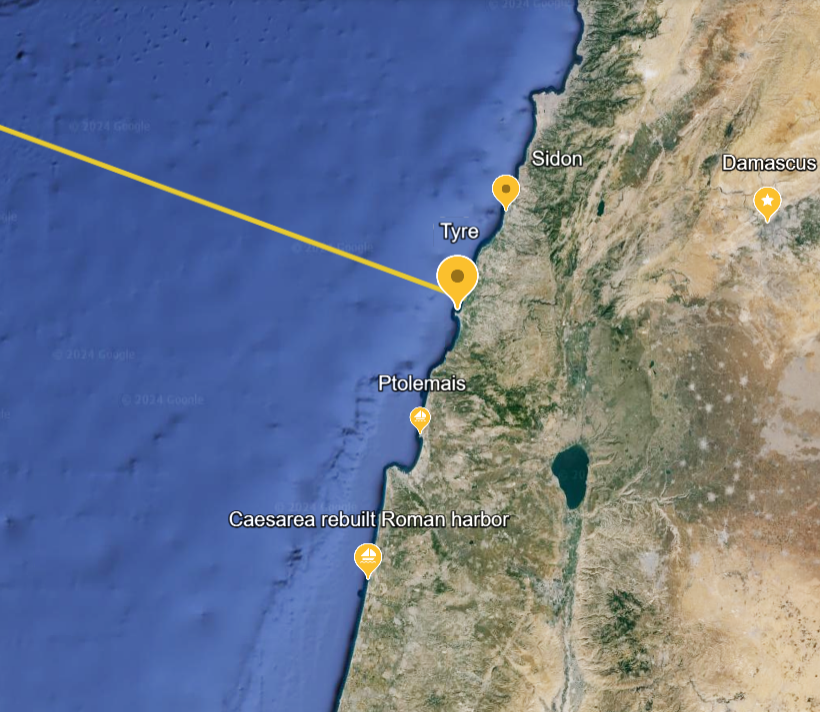
Returning to the Church in order to serve
Paul had first embarked on three missions TEN YEARS AGO from Antioch, with Jerusalem being little more than a stop on his way back to Syria along the roads of a distant mission skirting Galatia once more and bypassing Asia Minor to sail the Aegean to Macedonian and Greek cities.
~ AD 57
His FIVE YEAR THIRD MISSION now complete, the Apostle to the Gentiles now returns to Jerusalem.
Although the Lord Jesus Himself had taught in Tyre and Sidon (and also presumably the great Maccabean port of Ptolemais between them) Paul now lands in Caesarea, Herod’s great Hasmonaean port named for the Emperors they served.
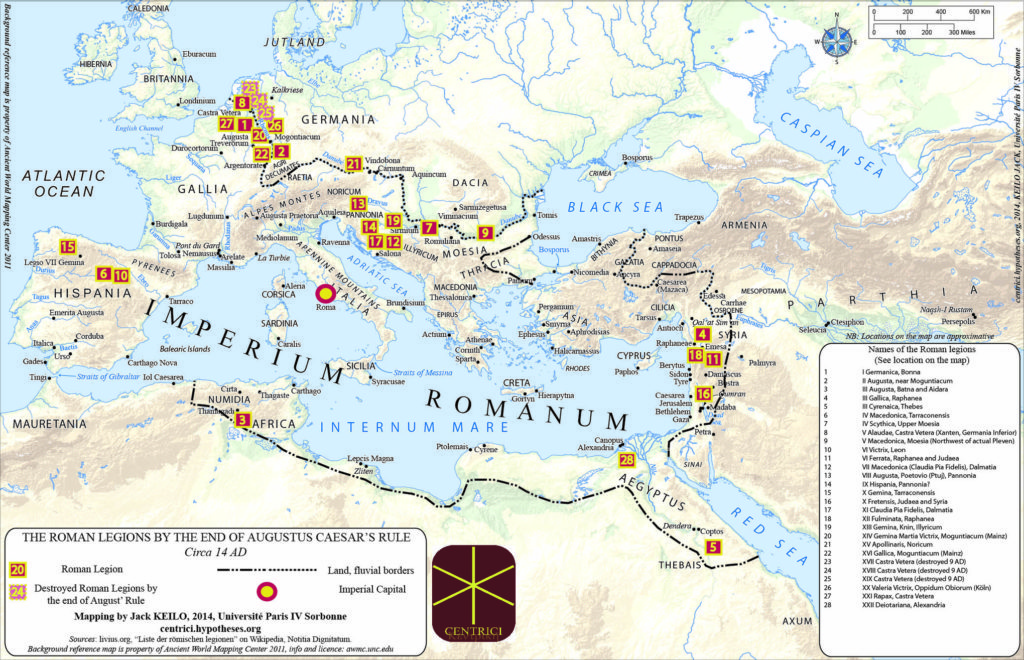
ROME ruled with a westward wave that had included all of the Aegean by the time its dual citizen, Saul of Tarsus, had preached the Gospel of Jesus Christ to much of Syria and Hellenist cities of a former Macedonian Empire.
~ A.D. 40 – a Judean history Before Christ
NOTE: Earlier in ACTS of the APOSTLES 12 I may have slighted the historical significance of this coastal area in our transition between ACTS of the Apostle Peter and the ACTS and missions of the Apostle Paul.
Now that Paul is returning home in the year of our Lord 57, let’s take a brief look at another map in the minds of Paul and historical context of Judeans born about the time of Christ Jesus.
~ AD 37
Saul had encountered the risen Christ along a road to Damascus. At the same time the Apostle Peter had taken the Gospel to Samaria and even to the gentiles.
And Saul [Paul], who had been received the the Apostles, then fled to Tarsus from Caesarea. – Acts 9:26-30
Paul is returning to brothers and sisters in Christ in Caesarea all these years later.
Dr. Luke, who knew a gentile history of his Aegean homeland, must have been taking Paul's account of these days as they sailed toward Judea and Jerusalem.
Here is even more history familiar to the Judeans.
a Strategic Coastline even Before Christ
The Romans eventually affirmed an alliance with the Maccabean leaders and encouraged other nations in the region to do the same.
The map shown here displays this complex political world of the Near East around 90 B.C., shortly before the Romans absorbed the Seleucid Empire and the Maccabean Kingdom in 63 B.C.
Source: Bible Mapper Atlas
~ 90 B.C.
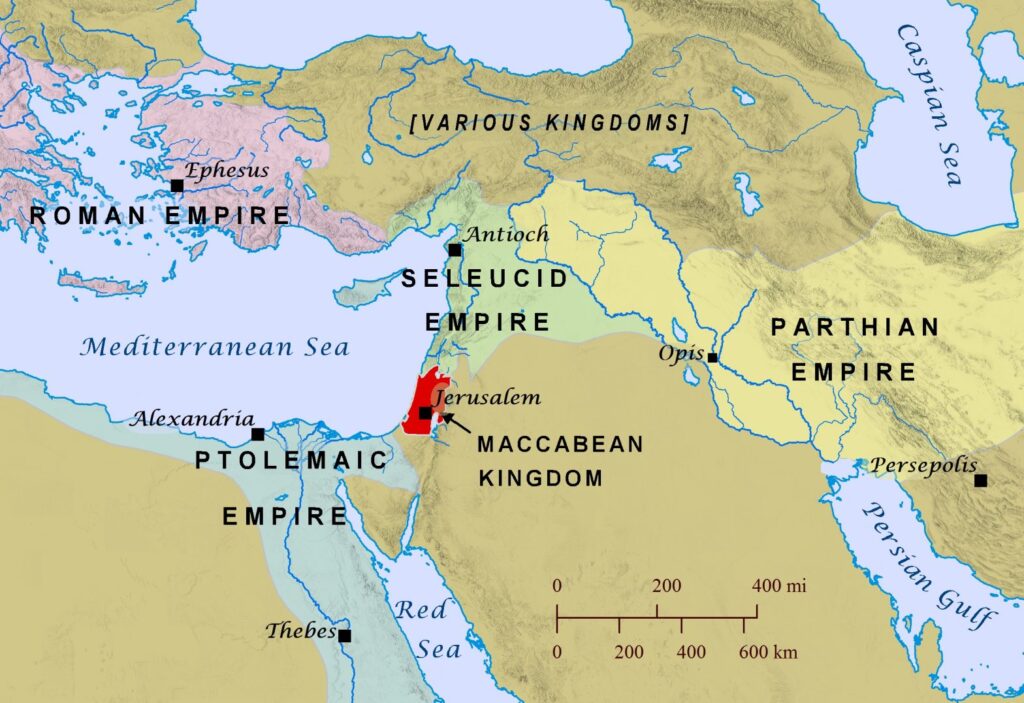
- After Alexander the Great died in 323 B.C., his empire was divided among his generals, including Ptolemy and Seleucus.
- Seleucid Empire led Antiochus IV Epiphanes
- open rebellion by faithful Jews under the leadership of Mattathias Maccabeus and his sons in 167 B.C.
- The Romans eventually affirmed an alliance with the Maccabean leaders and encouraged other nations in the region to do the same. The map shown [above] displays this complex political world of the Near East ~90 B.C.,
- the Romans absorbed the Seleucid Empire and the Maccabean Kingdom in 63 B.C.
Antiochus IV Epiphanes sought to unify his diverse domain by forcing Greek religious and political practices upon all his subjects (1 Maccabees 1; 2 Maccabees 6-7) – source
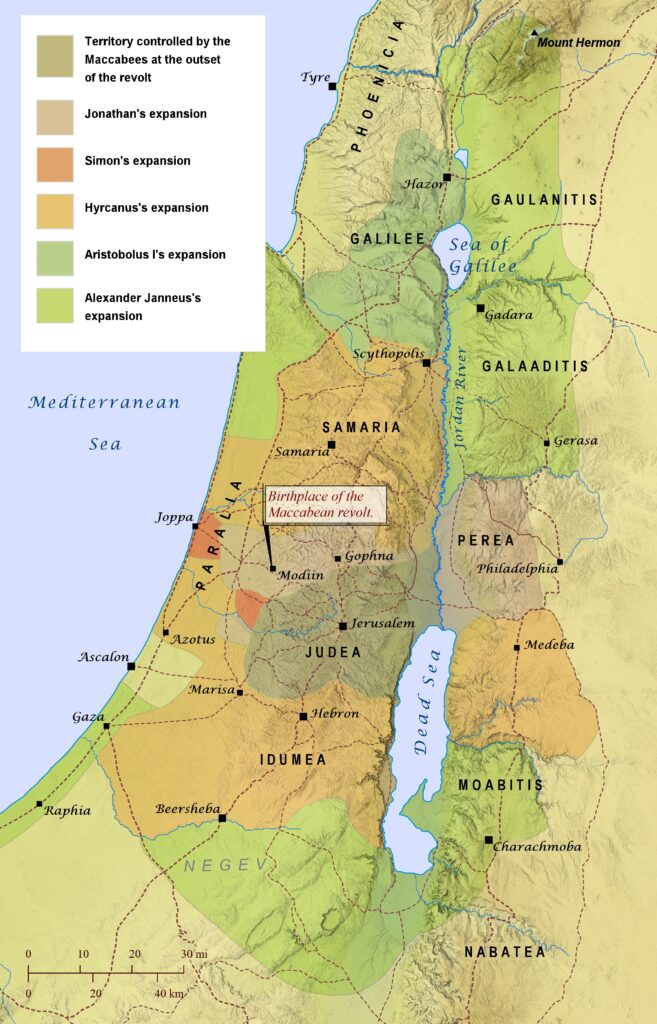
Division
Before Christ, the GREAT Hellenist ALEXANDER had died in the BABYLON he conquered in a world to the EAST from where Judeans had earlier returned home to Jerusalem under Nehemiah.
Alexander’s thrice-divided Kingdom would eventually leave Jerusalem divided between Maccabean and Hellenist. The ruthless and GREAT builder King Herod also left legacy of a thrice-divided Kingdom to sons upon his death [~4 BC].
The JUDEA (and Jerusalem) prominent in the times of JESUS and Paul does NOT include a separate Samaria (home of the Maccabean revolt) OR Galilee.
Herod had not only named his great harbor and fortress CAESAREA (a clear concession to a Hellenist Rome) but had built a town and fortress to the north also named for the Hellenist father of Alexander, CAESAREA PHILLIPI.
SAUL (Paulos) in Caesarea
Arriving before Saul - Philip
- Jerusalem:
Now in those days, while the disciples were multiplying in number, there was grumbling from the Hellenists against the Hebrews, because their widows were being overlooked in the daily serving of food.
Acts of the Apostles 6:1 LSB
.. and they chose Stephen, a man full of faith and of the Holy Spirit, and Philip, Prochorus, Nicanor, Timon, Parmenas, and Nicolas, a proselyte from Antioch.
Philip went down to the city of Samaria
ACTS of the Apostles 8:5 NASB20
and began proclaiming the [Messiah] Christ to them.
This had been at about the same time Saul was persecuting the church.
Philip the Evangelist and deacon from Jerusalem had travelled to Gaza, then was miraculously taken up to take the Gospel north to Caesarea where he would reside.
But Philip found himself at Azotus, and as he passed through he kept preaching the gospel to all the cities, until he came to Caesarea.
Acts 8:40 NASB
PAUL Returning 20 years later to Philip in Caesarea
we reached Caesarea and stayed at the house of Philip the evangelist, one of the Seven.
9 He had four unmarried daughters who prophesied.
10 After we had been there a number of days, a prophet named Agabus came down from Judea.
ACTS of the Apostles 21 – Paul’s return from his third missionary journey – To be continued…
Comment on Scripture + Share the Gospel

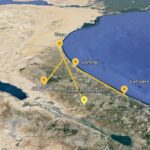
Leave a Reply